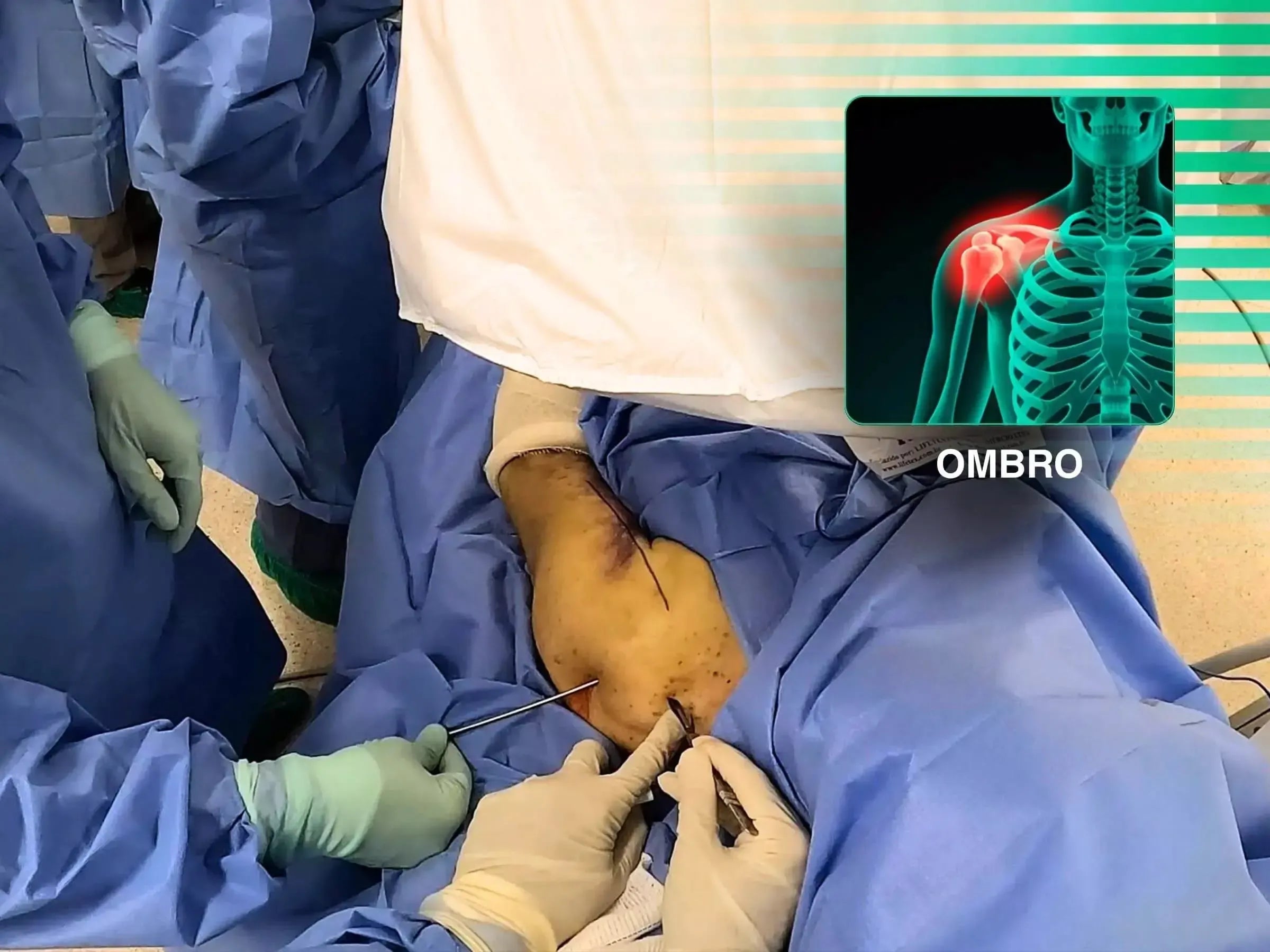
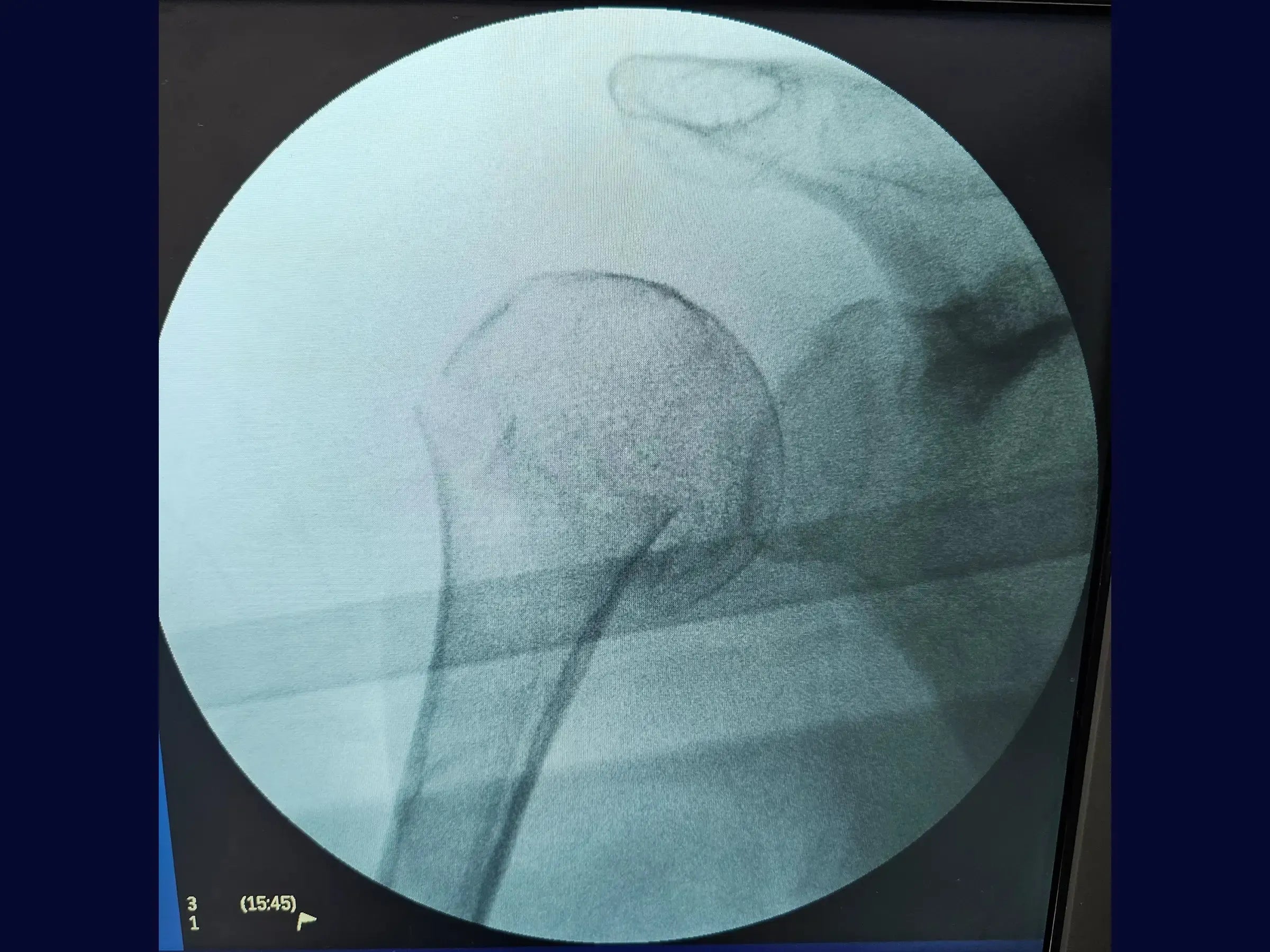
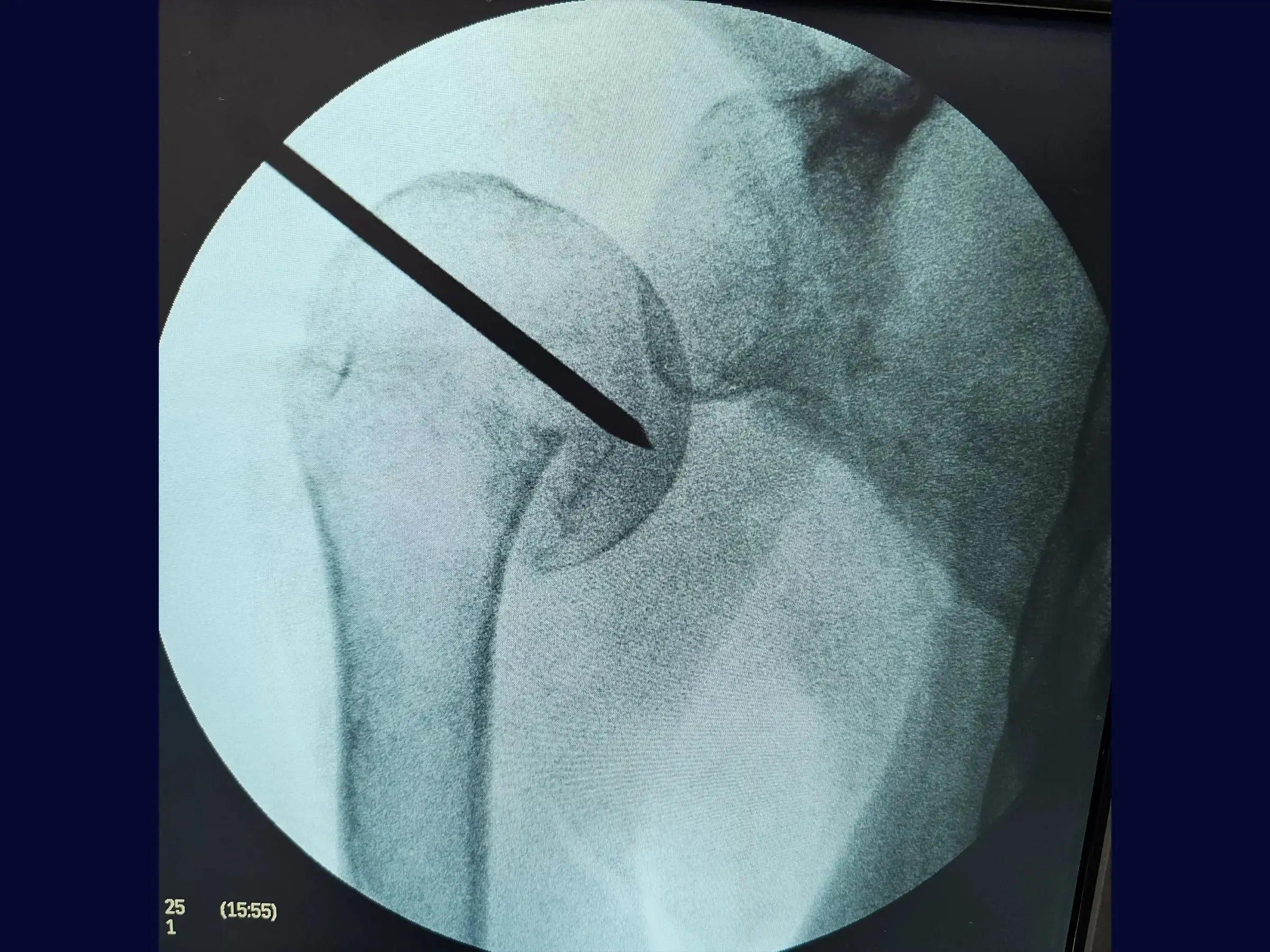
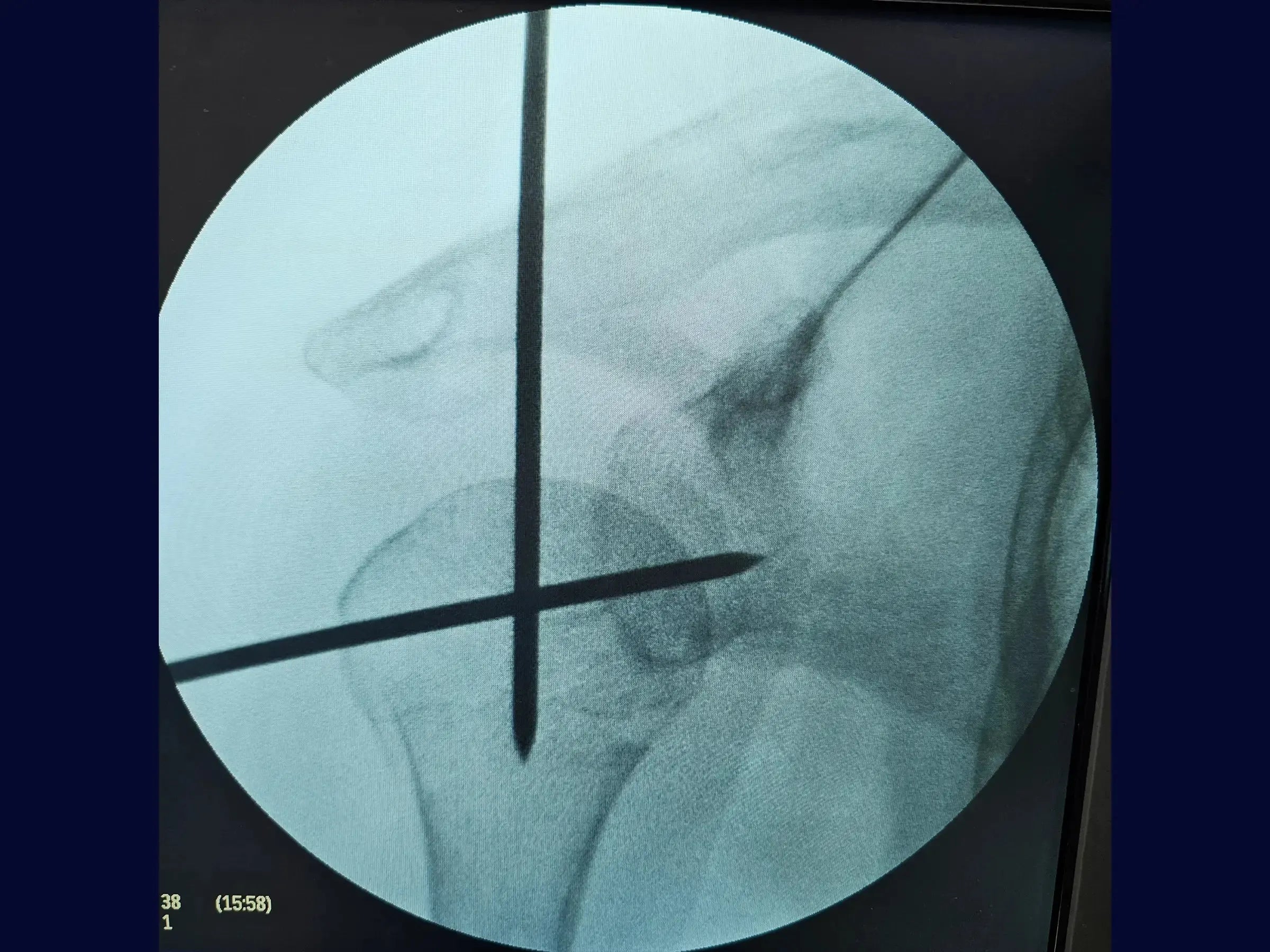
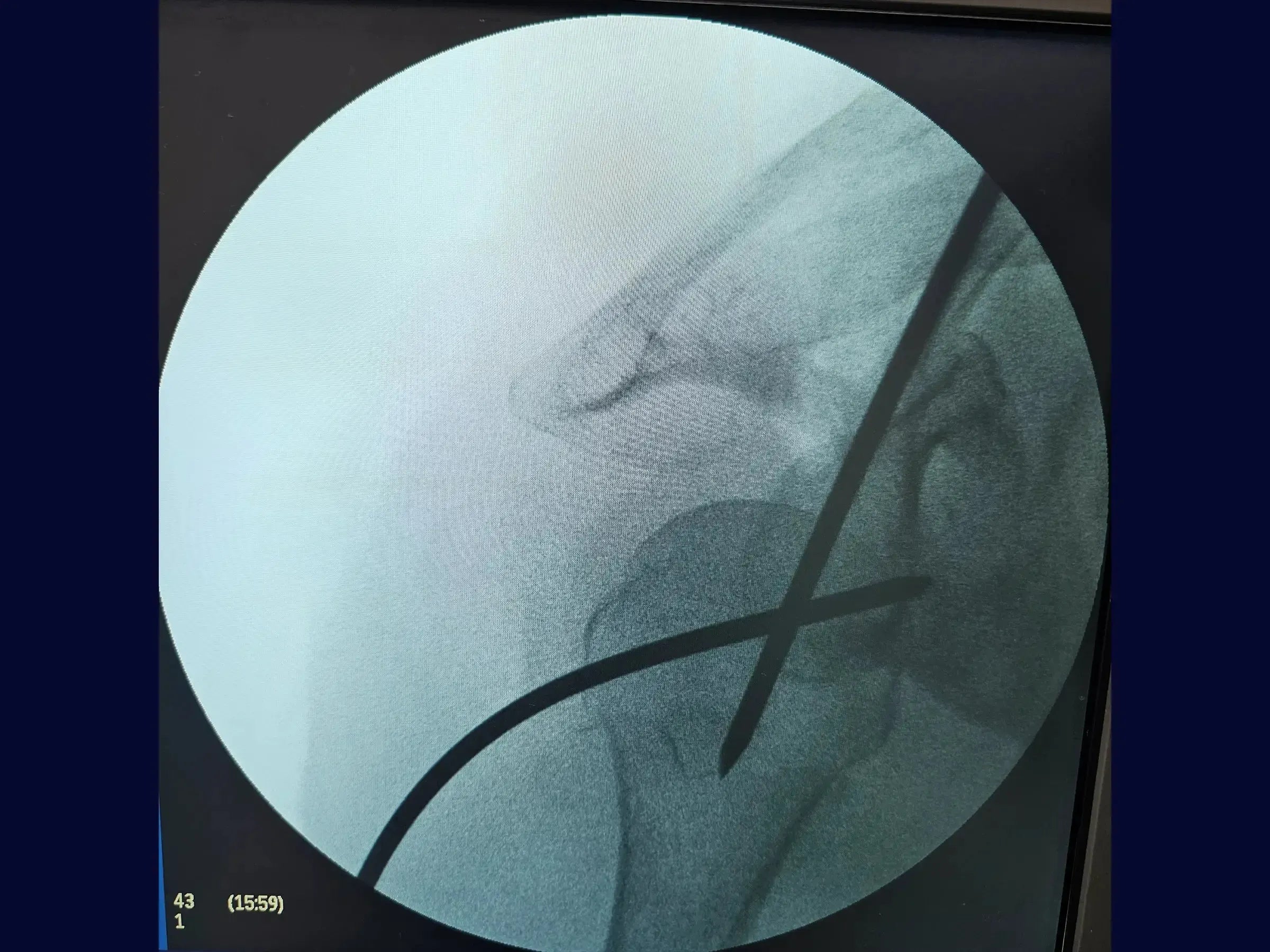
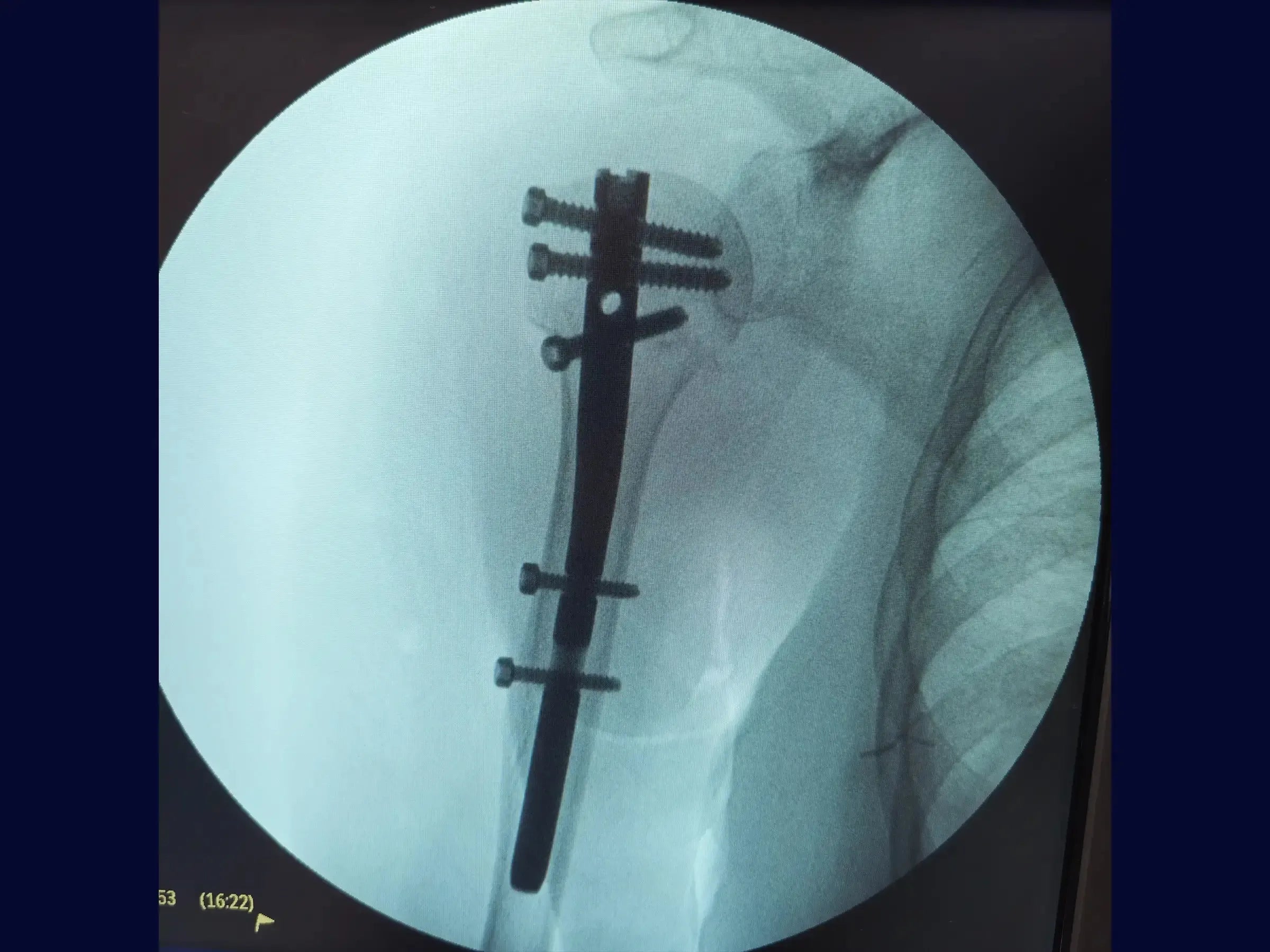
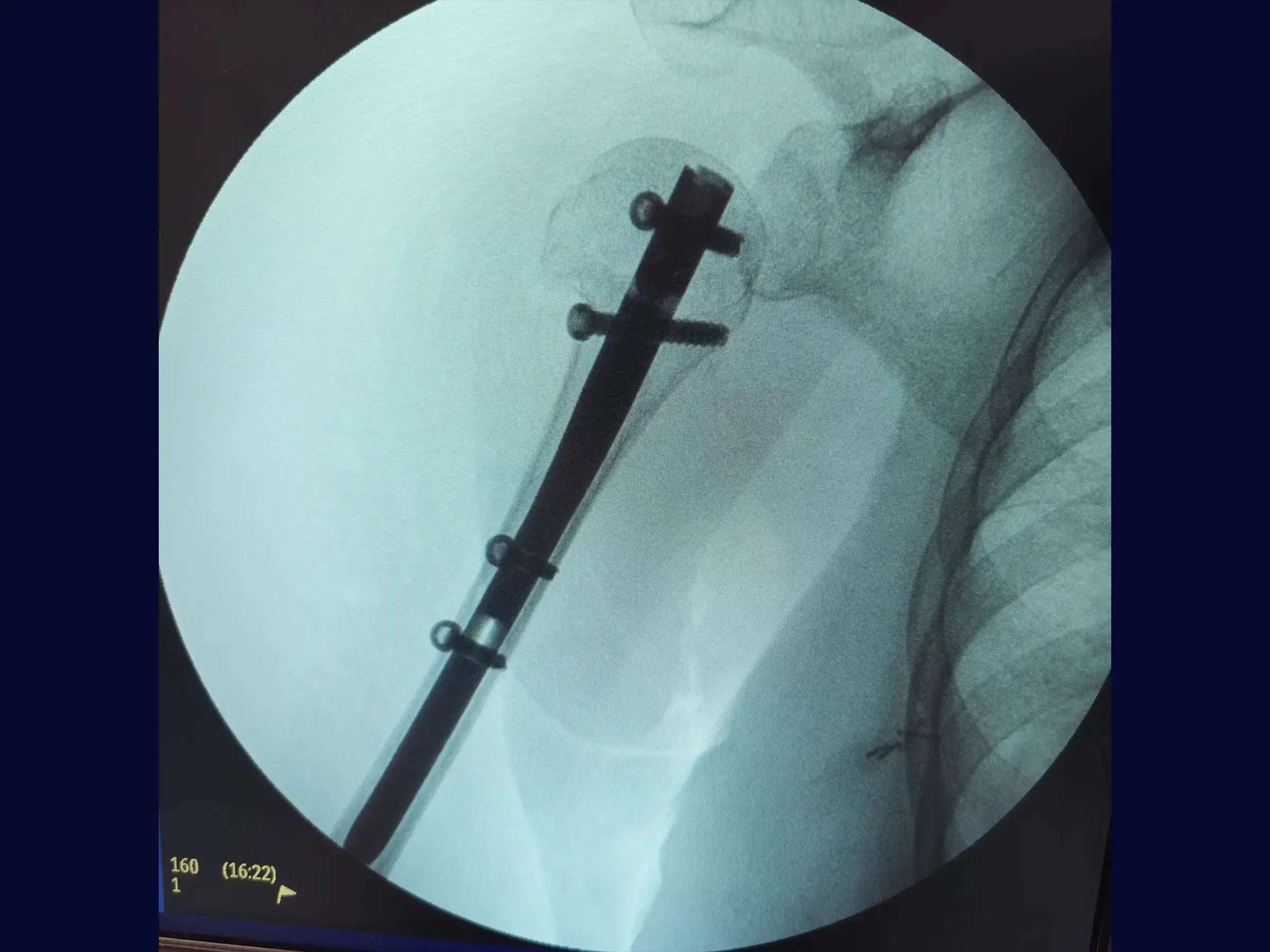
Intramedullary Rod for Proximal Humerus Fracture
Master the osteosynthesis of the proximal humerus with joystick technique and intramedullary rod through minimal access.


4k videos
Professional Dubbing
Escolher opções








Description
The complexity of proximal humerus fractures requires approaches that preserve function and minimize morbidity. This training offers a technical immersion in intramedullary nail osteosynthesis, utilizing minimally invasive accesses and a "joystick" technique for manipulating the proximal fragment, focusing on the recovery of the axis, rotation, and version of the humeral head without the need for precise anatomical reduction.
Training Focus:
- Osteosynthesis of proximal humerus fractures with intramedullary nail.
- Minimally invasive reduction and fixation techniques.
- Fragment manipulation with "joystick" for optimizing the angle of attack.
- Precise measurement of the intramedullary nail.
- Fixation with proximal and distal locking screws.
Detailed Content:
- Proximal Fragment Manipulation with "Joystick": Methodology for optimizing the guide wire's angle of attack, ensuring ideal positioning and improving the exposure of the transition between the greater tuberosity and the humeral head.
- Minimally Invasive Surgical Access: Details of the rotator cuff approach for accessing and exposing the area, minimizing tissue trauma.
- Optimization of Guide Wire Introduction: Strategies for precise positioning of the guide wire in the humeral head, assisted by radiographic confirmation and the use of the "joystick" to obtain AP and lateral images.
- Accurate Measurement of the Intramedullary Rod: Measurement protocols using an external guide, with attention to the anatomical peculiarities of the distal humerus to avoid under-sizing or over-sizing of the implant.
- Intramedullary Rod Insertion Technique: Approach for manual introduction of the rod, aiming to prevent the use of a hammer and reduce the risk of iatrogenic fractures.
- Stable Fixation with Locking Screws: Methodology for the insertion of proximal and distal locking screws through mini accesses, including the fixation of the calcar, focusing on the recovery of the axis, rotation, and version of the humeral head.
- Functional Reduction Strategies: Principles of osteosynthesis that prioritize the functional and biomechanical recovery of the humerus, understanding that precise anatomical reduction is not essential in this type of fracture.
Included Material:
- Detailed PDF: A detailed document complements the training, objectively addressing the crucial steps of the procedure: manipulation with a "joystick," planning with an image intensifier, surgical accesses, introduction of the guide wire, measurement and insertion of the intramedullary rod, and fixation of the proximal and distal locking screws, highlighting the goal of recovering the axis, rotation, and version of the humeral head for the success of the intervention.
Enhance your skills in trauma surgery. Enroll now and master the technique in the treatment of proximal humeral fractures.

